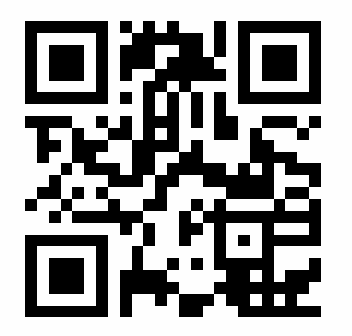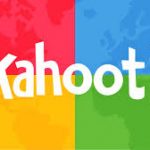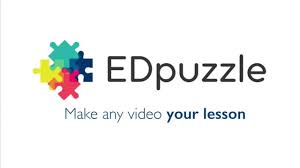3D BOYD
Learn how to scan in your own #3D objects using your mobile device FOR FREE! @QloneApp #ARVRinEDU https://t.co/IdaJiXVFyn
— Jaime Donally (@JaimeDonally) January 27, 2020
Digital Literacy for St. Cloud State University
Learn how to scan in your own #3D objects using your mobile device FOR FREE! @QloneApp #ARVRinEDU https://t.co/IdaJiXVFyn
— Jaime Donally (@JaimeDonally) January 27, 2020
Authors: Published: Columns:
Device ownership alone doesn’t make people digitally literate; rather, digital literacy is about how and why they use devices to achieve particular goals and outcomes.
According to the 2018 EDUCAUSE Center for Analysis and Research (ECAR) Study of Undergraduate Students and Information Technology, 95% of undergraduate students own a smartphone and 91% own a laptop. This near-ubiquitous ownership of these devices might suggest that digital literacy is mainstream, but just because students own digital devices does not mean that they’ve developed digital literacy.
Definitions of digital literacy can include the ability to use and access digital devices, but studies from the past decade tend to deepen this definition. A commonly cited definition from Colin Lankshear and Michele Knobel asserts that digital literacy is “shorthand for the myriad social practices and conceptions of engaging in meaning making mediated by texts that are produced, received, distributed, exchanged etc., via digital codification.”
More recently, scholars including Jennifer Sparrow have suggested even adopting the term digital fluency instead of literacy in order to capture how students may need the “ability to leverage technology to create new knowledge, new challenges, and new problems and to complement these with critical thinking, complex problem solving, and social intelligence to solve the new challenges.”
two-thirds of faculty think that students are prepared to use software applications, but students themselves express discomfort with applying these tools for learning.
instructional designers are key players who could take a more visible role in higher education to support educators in bringing explicit instruction on digital literacy engagement into their classes. University staff in instructional design and educational/faculty development spaces consult with instructors, lead workshops, and develop support documentation on a regular basis. People in these roles could be more empowered to have conversations with the instructors they support around building in particular lessons
Douglas Belshaw can be a source of inspiration for understanding how his essential elements of digital literacy may contribute to the development of students’ digital fluencies. In particular, some practices may include:
Where | Къде: СУ „Димитър Матевски“ https://goo.gl/maps/rojNjE3dk4s and online ( виртуално)
When | Кога: 2. май, 2018, 14 часа | May 2, 2018, 2PM local time (Bulgaria)
Who | Кой: преподаватели и педагози | teachers and faculty
How | Как: използвайте “обратна връзка” за споделяне на вашите идеи | use the following hashtag for backchanneling #BGtechEd
short link: http://bit.ly/teachassess |

Live stream: |
Тема1. Сравняване на Kahoot, Edpuzzle и Apester – 1-1, 1/2 час продължителност
Topic 1: A comparison of Kahoot, Apester and EdPuzzle
definitions | термини : BYOD (BYOx), flipped classroom, formative assessment (vs summative assessment)
| Kahoot (https://kahoot.it/) – 10 мин. | |
 |
|
| Apester (https://apester.com/ )– 10-15мин. | |
| |
|
| Edpuzzle (https://edpuzzle.com )– 10 – 15мин. | |
 |
https://edpuzzle.com/assignments/5ad4cad48f4df34107c58bd0/watch |
Тема 2. Виртуална реалност в учебния процес – теория и практика- 1-1, 1/2 час продължителност
Topic 2. Virtual reality in teaching and learning – theory and hands-on
When a student is brilliant on the street corner but falling asleep in class, something is wrong with the schooling system
Ако учащ се е страхотен на ъгъла на улицата, но се проваля или заспива в клас, тогава нещо е грешно с учебната система
https://blog.stcloudstate.edu/ims/2018/04/17/education-teched-frenemies/
VR can be inexpensive and effective | Виртуална / разширена реалност може да бъде ефикасна и ефективна: https://blog.stcloudstate.edu/ims/2018/04/26/teaching-virtual-reality/
https://www.linkedin.com/groups/2811/2811-6391674579739303939
Definitions for VR/AR/MR | дефиниции на: виртуална реалност; разширена реалност; смесена реалност
https://blog.stcloudstate.edu/ims/2018/03/21/t4tl-games-and-vr-library/
#3 from the following blog entry: https://blog.stcloudstate.edu/ims/2018/04/17/practical-about-vr-and-ar-in-schools/ (go beyond storytelling)
++++++++++++++
Additional Information | Дпълнителна литература/информация
https://blog.stcloudstate.edu/ims/2016/02/22/formative-assessment-ideas/
Formative Assessment Tools: https://blog.stcloudstate.edu/ims/2016/01/13/formative-assessment-tools/
https://blog.stcloudstate.edu/ims/2014/12/09/formative-assessment/
Before they set foot in their first class, incoming college students face a maze of requirements and resources that will be critical to their success. So-called “student supports” abound. Yet forty percent of first-year students don’t return the following year, and a growing number report information overload as they navigate campus life amid newfound independence.
The nine in 10 undergraduates who own smartphones are probably familiar with the xkcd about it. College-aged Americans check their devices more than 150 times per day. So it should be no surprise that a growing body of research suggests that mobile solutions can play a critical role in enhancing the student experience.
1. Is the mobile app native?
We’ve all had the frustrating experience of using a smartphone to navigate a page that was designed for a computer. But when designing native mobile apps, developers start with the small screen, which leads to simpler, cleaner platforms that get rid of the clutter of the desktop browsing experience.
As smartphones overtake laptops and desktops as the most popular way for young people to get online, native design is critical for universities to embrace.
2. Is there a simple content management system?
It’s also critical to explore whether mobile apps integrate with an institution’s existing LMS, CMS, and academic platforms. The most effective apps will allow you to draw upon and translate existing content and resources directly into the mobile experience.
My note: this is why it is worth experimenting with alternatives to LMS, such as Facebook Groups: they allow ready-to-use SIMPLE mobile interface.
3. Does it allow you to take targeted action?
At-risk or disengaged students often require more targeted communication and engagement which, if used effectively, can prevent them falling into those categories in the first place.
Unlike web-based tools, mobile apps should not only communicate information, but also generate insights and reports, highlighting key information into how students use the platform.
4. Does it offer communication and social networking opportunities?
Teenagers who grew up with chatbots and Snapchat expect instant communication to be part of any online interaction. Instead of making students toggle between the student affairs office and conversations with advisors, mobile platforms that offer in-app messaging can streamline the experience and keep users engaged.
5. Does it empower your staff?
++++++++
more on mobile in education in this IMS blog:
https://blog.stcloudstate.edu/ims?s=mobile+education
According to the latest report from Babson Survey Research Group, nearly 6.5 million American undergraduates now take at least one course online
1. Listen to students and faculty. Every college, university, or online-learning provider has a different approach to online learning. At Indiana University, where more than 30 percent of students take at least one online course, the online education team has launched Next.IU, an innovative pilot program to solicit feedback from the campus community before making any major edtech decision. By soliciting direct feedback from students and faculty, institutions can avoid technical difficulties and secure support before rolling out the technology campus-wide.
2. Go mobile. Nine in 10 undergraduates own a smartphone, and the majority of online students complete some coursework on a mobile device. Tapping into the near-ubiquity of mobile computing on campus can help streamline the proctoring and verification process. Rather than having to log onto a desktop, students can use features like fingerprint scan and facial recognition that are already integrated into most smartphones to verify their identity directly from their mobile device.
For a growing number of students, mobile technology is the most accessible way to engage in online coursework, so mobile verification provides not only a set of advanced security tools, but also a way for universities to meet students where they are.
3. Learn from the data. Analytical approaches to online test security are still in the early stages. Schools may be more susceptible to online “heists” if they are of a certain size or administer exams in a certain way, but institutions need data to benchmark against their peers and identify pain points in their approach to proctoring.
In an initial pilot with 325,000 students, for instance, we found that cheating rose and fell with the seasons—falling from 6.62 percent to 5.49 percent from fall to spring, but rising to a new high of 6.65 percent during the summer.
++++++++++++
more on proctoring in this IMS blog
https://blog.stcloudstate.edu/ims?s=proctoring
there’s nothing done with technology in the school that can’t be done from anywhere and on any device. This has given students and teachers total mobility.
If you have a 1-to-1 initiative, you’ve given students a computer, and when you allow them on your network, you’re going to have all the risks associated with that: corruptions, viruses and other problems that you have to support.
You bring your device, log in with credentials, and now we will run a virtual desktop and you will have, in a secure environment, access to your applications, your files and our network printers, just like if all that had been locally installed on a notebook computer that you had gotten off of a cart.
http://time.com/3759634/virtual-world-varsity-sport/
Much like the way athletic-gear companies such as Nike and Adidas infiltrated traditional scholastic sports, video-game companies are helping underwrite the college gaming explosion. Riot Games, creator of League of Legends, is offering $360,000 in total scholarship money toplayers who make this year’s collegiate Final Four, more than tripling last year’s prize
My note: recommendation to LRS gaming committee. Can Eric be the LRS rep who can seek collecting an adhoc SCSU team? as per https://blog.stcloudstate.edu/ims/2015/03/19/recommendations-for-games-and-gaming-at-lrs/
If we to meet Dennis, Jim and/or Susantha, as recommended by Mark Vargas, the conversation needs to go that direction. Matt Barton definitely will be interested.
If we to consider the second and third higher level (how to gamify the educational process) or the educational methodology of gaming, I think we have to prepare the argument at LRS (as recommended by someone with a terminal degree in education or at least strong interest in pedagogy).
More on gaming at IMS blog
https://blog.stcloudstate.edu/ims/?s=gaming
more on gamification at IMS blog
https://blog.stcloudstate.edu/ims/?s=gamification
Based on the literature regarding games, gaming, gamification, game-based learning, and serious games, several clear trends emerge:
Recommendations for LRS
http://www.teachthought.com/trends/byod-is-shortest-path-to-student-centered-learning/
By allowing students to bring in their own devices for learning–rather than insisting that they learn both content and device in school–there is an important opportunity to connect with not just their personal lives, but their natural way of doing things.
Equity
While there are students who badly want technology and can’t afford even the $50, that doesn’t seem to be a strong argument against BYOD adoption, especially in light of what it costs—in time and money—to purchase, train, integrate, and maintain—state-funded, district-purchased, school-assigned devices. This is where schools, local organizations, and communities can step in.
Money and Learning
In the United States there can be a tendency to throw money at problems that are not fully understood. As a nation, America lags behind internationally, the “learning market” being one of the few markets proving evasive in lieu of continued effort, struggle, and spending.
More on BYOD in this blog:
https://blog.stcloudstate.edu/ims/?s=byod
http://www.teachthought.com/technology/11-sample-education-byot-policies-to-help-you-create-your-own
Will students be wearing their tech in virtual classrooms in five years? Wearable devices, adaptive technologies, and the Internet of Things are just some of the new tech researchers say is shaping the near future of higher education.
In 1 Year or Less: BYOD and the flipped classroom.
“Employers and higher education institutions are finding that when given the opportunity to choose their device, users are saved from the effort and time needed to get accustomed to new devices and can therefore accomplish tasks with more ease and efficiency.”
“Flipped learning is seen as especially suited for higher education because the rearranging of class time gives students in large introductory lecture courses more opportunity to engage and interact with their peers.”
In 2-3 Years: Makerspaces and wearable devices.
Makerspaces have the “benefit of engaging learners in creative, higher-order problem solving through hands-on design, construction and iteration.”
“Wearable technology is poised to see significant growth in the coming years, spurring experimentation in higher education because the demand for wearables is seen to be coming in large part from college-aged students.”
In 4-5 Years: Adaptive technologies and the Internet of Things.
“Adaptive technology is seen as a means to break free of a “one-size-fits-all” approach to education and is suited well for online and hybrid learning environments, “where student activities are conducted virtually and can be monitored by software and tracking applications.”
The Internet of Things pushes information to learners from their surroundings. “For instance, a learner exploring a city with a rich historical past can explore their environment through an architectural, political, or biological lens, depending on how the surroundings are equipped.”
From the NMC Horizon Report 2015: Higher Education Edition